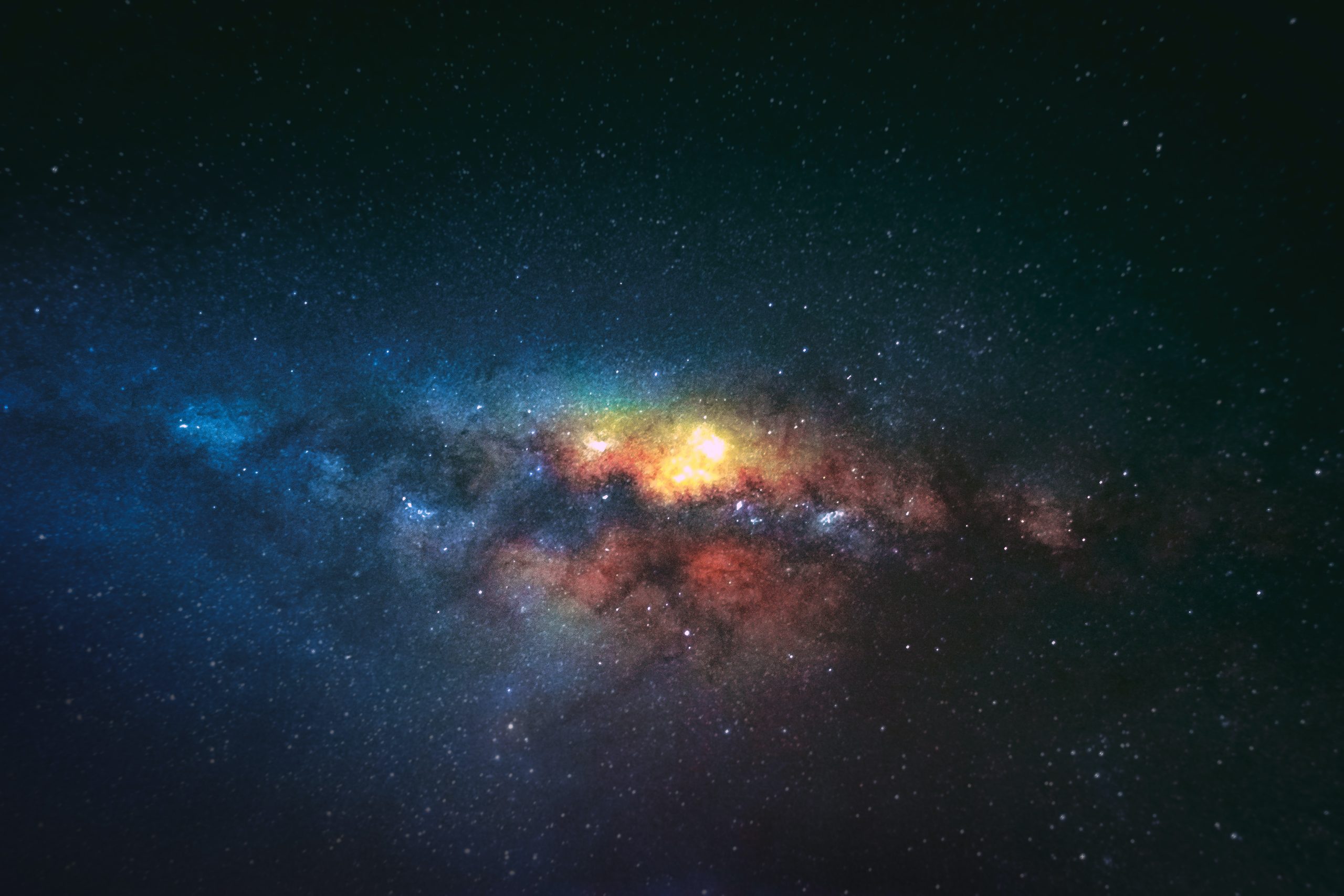Sure, you might be wondering if it’s possible to observe the International Space Station transits with a telescope. Well, the answer is a resounding yes! With a properly equipped telescope, you can experience the awe-inspiring sight of the International Space Station passing across the night sky.
To observe these transits, you’ll need a telescope that is capable of tracking celestial objects and has an appropriate eyepiece. By accurately predicting the timing and location of the transits, you can position your telescope and witness the International Space Station as it glides across the backdrop of stars. It’s an incredible opportunity to marvel at the remarkable human achievement that is the International Space Station, and to connect with the mysteries and wonders of our universe right from your own backyard.

Preparing to Observe the International Space Station Transits
Choosing the Right Telescope
When it comes to observing the International Space Station (ISS) transits, choosing the right telescope is crucial. It is recommended to opt for a telescope with a larger aperture, as it allows for more light to enter and provides a clearer image. A telescope with a focal length of at least 1000mm is also ideal for capturing the ISS as it passes across the sky.
Understanding Transit Timing
Transit timing refers to the precise moment when the ISS passes in front of the Sun, Moon, or a bright planet. It is important to have accurate transit timing information to ensure you are in the right place at the right time to observe the transit. Various websites and apps provide transit prediction data, allowing you to plan your observation accordingly.
Determining Visibility of the International Space Station
Before observing the ISS transit, it is essential to determine whether it will be visible in your location. There are several websites, such as NASA’s Spot the Station, that provide real-time visibility predictions based on your location. By inputting your coordinates, you can find out when the ISS will be passing overhead and how bright it will appear in the sky.
Preparing Your Telescope Equipment
To ensure a successful observation of the ISS transit, make sure your telescope equipment is in proper working condition. Check for any damage or misalignment and clean the lenses and mirrors if necessary. It is also a good idea to familiarize yourself with your telescope’s features and settings ahead of time, so you can easily make adjustments during the observation.
Checking Weather Conditions
Weather conditions play a critical role in the visibility of the ISS transit. Clear skies are essential for a successful observation, so it is important to check the weather forecast in advance. Avoid observing during cloudy or hazy conditions, as it will make it difficult to see the ISS clearly. Wait for a day with clear skies and minimal atmospheric disturbances for the best viewing experience.
Observing the International Space Station Transit
Finding the Right Time and Location
To observe the ISS transit, you need to determine the precise time and location from which you will observe. Using the transit timings obtained earlier, calculate when and where the ISS will be visible in your area. Choose a location away from bright city lights and tall buildings to avoid light pollution and obstructions that may hinder your view.
Aligning Your Telescope
Properly aligning your telescope is crucial for accurately tracking the ISS during its transit. Use a compass or smartphone app to ensure your telescope is pointing in the correct direction. The ISS moves at a fast pace, so it is important to have your telescope aligned and ready to track its movement smoothly.
Tracking the International Space Station
As the ISS transits across the sky, you must track its movement using your telescope. Some telescopes have automatic tracking capabilities, while others require manual adjustments. Gradually track the ISS to keep it centered within the field of view. Adjust the telescope’s altitude and azimuth settings as needed to ensure a continuous view of the transit.
Adjusting for Focus and Brightness
During the observation, it is essential to adjust the focus and brightness settings on your telescope. The ISS may appear as a small dot moving across the sky, so it is important to focus your telescope properly to capture a clear image. Adjust the telescope’s magnification and exposure settings to enhance the visibility of the ISS and any details it may exhibit.
Documenting the Transit
To preserve the memory of your ISS transit observation, consider documenting it through photography or video recording. Attach your smartphone or a DSLR camera to your telescope to capture high-quality images or record the transit as a video. Share your experience with others and contribute to citizen science projects that collect transit observations for scientific analysis.
Challenges in Observing International Space Station Transits
Fast Movement and Limited Visibility
The ISS moves at an astonishing speed of approximately 17,500 miles per hour, making it challenging to track and observe without the proper equipment. Due to its rapid movement, the transit duration can be as short as a few seconds. Therefore, it is crucial to have your telescope set up correctly and be prepared to follow the fast-moving path of the ISS across the sky.
Light Pollution Interference
Urban areas with excessive light pollution can interfere with the visibility of the ISS transit. To minimize the impact of light pollution, choose a observing location away from city lights and other sources of artificial light. This will enhance the contrast and clarity of the ISS against the backdrop of the night sky, allowing for a more enjoyable and successful observation.
Atmospheric Conditions and Distortions
The Earth’s atmosphere can introduce distortions and fluctuations in the image quality during ISS transits. These atmospheric conditions, known as “seeing,” can cause the ISS to appear blurry or distorted. To mitigate this, observe during periods of stable atmospheric conditions, such as on calm nights with minimal wind and temperature fluctuations.
Potential Obstructions or Passover Timing
Obstructions such as trees, buildings, or other structures can obstruct your view of the ISS transit. Before choosing your observation location, ensure that there are no obstructions that may interfere with the path of the transit. Additionally, consider the timing of the transit—avoid observing when the ISS is passing close to the horizon, as atmospheric interference and obstructions are more likely to occur.
Tips for Successful Observations
Joining Observing Networks and Websites
To enhance your observing experience, consider joining observing networks and websites dedicated to tracking the ISS. These networks provide valuable information, such as transit notifications, observation tips, and updates on upcoming missions. They also provide a platform for sharing your observations with a community of fellow enthusiasts.
Using Mobile Apps for Accurate Tracking
Mobile apps specifically designed for ISS tracking can be a valuable tool for accurate tracking and real-time information. These apps utilize GPS data to determine your location and provide transit predictions tailored to your specific coordinates. They also offer features such as augmented reality and notifications to help you plan and execute your observation effectively.
Collaborating with Amateur Astronomers
Collaborating with fellow amateur astronomers can greatly enrich your ISS transit observations. By joining local astronomy clubs or participating in online forums, you can share experiences, exchange tips, and learn from others’ expertise. Collaborative observations can also lead to joint projects and the opportunity to contribute to scientific research.
Utilizing Advanced Imaging Techniques
If you have advanced imaging skills and equipment, consider experimenting with astrophotography techniques to capture stunning images of the ISS. Long-exposure photography, stacking multiple images, or employing specialized filters can reveal intricate details and highlight the beauty of the ISS transiting against the celestial backdrop.

Impressive Sightings and Future Missions
Notable International Space Station Transits
Throughout the year, there are several notable ISS transits that astronomy enthusiasts eagerly anticipate. These include transits across the face of the Sun or Moon, known as solar and lunar transits respectively. Solar transits, in particular, offer a rare and awe-inspiring spectacle when the ISS passes directly in front of the Sun, creating a small silhouette visible from Earth.
Future Opportunities and Missions
The future holds numerous opportunities to witness fascinating ISS transits. With the increasing number of manned and unmanned missions, including the Artemis program and various resupply missions, there will be more chances to observe the ISS transiting across the sky. Stay updated on upcoming missions to plan your observations and witness these incredible events.
SpaceX Crew Dragon and Boeing Starliner
The recent advancements in spacecraft technology have brought about new opportunities to observe the ISS in transit. The SpaceX Crew Dragon and Boeing Starliner are the latest crewed spacecraft designed to transport astronauts to and from the ISS. Witnessing these spacecraft during their transit to and from the ISS adds an exciting dimension to observation and highlights the ongoing progress in space exploration.
Benefits and Insights from Observing the International Space Station
Scientific Contributions and Research Opportunities
Observing the ISS transits can contribute to scientific research in various ways. By documenting and sharing your transit observations, you can provide valuable data that aids in understanding the orbital dynamics of the ISS and improving its orbit prediction models. Your observations may also help in studying atmospheric conditions, light pollution, and other factors that influence the quality of observations.
Education and Outreach Initiatives
Observing the ISS transits can be leveraged as an educational and outreach opportunity. Share your observations with schools, science centers, or astronomy clubs to inspire and educate others about space exploration. Organize viewing events, workshops, or presentations to engage the community and raise awareness about the ISS and its missions.
Inspiration and Wonder
A central benefit of observing the ISS transits is the sense of inspiration and wonder it evokes. Witnessing the ISS, a technological marvel, glide across the sky can instill a profound appreciation for human achievements in space. Observing the ISS brings us closer to the wonders of the universe, reminding us of the infinite possibilities that lie beyond our planet.

Safety Guidelines and Considerations
Avoiding Damage to Your Eyes
Observing the ISS transit requires taking necessary precautions to avoid eye damage. Never look directly at the Sun while attempting to observe the ISS, as this can cause severe eye injury. Always use appropriate solar filters or projection methods to safely observe solar transits, and ensure that you have proper eye protection when using telescopes or binoculars.
Implementing Safe Viewing Practices
When observing the ISS transit, it is essential to practice safe viewing techniques. Avoid looking through the telescope or binoculars for extended periods, as this can strain your eyes. Take regular breaks and allow your eyes to rest. Additionally, be cautious when handling the equipment and ensure that it is set up in a stable and secure manner to prevent accidents.
Taking Precautions with Equipment
To ensure the safety and longevity of your telescope and other observation equipment, handle them with care. Avoid exposing your equipment to extreme temperatures or harsh weather conditions that can damage delicate components. Regularly inspect and maintain your equipment, and store it properly when not in use to prevent dust or moisture buildup.
Alternative Ways to Observe the International Space Station
Spotting the International Space Station with the Naked Eye
Not everyone may have access to a telescope or the necessary equipment to observe the ISS transit. However, it is still possible to witness the ISS crossing the sky with the naked eye. The ISS is often visible as a bright, fast-moving point of light, similar to a star, and can be easily spotted during its evening or pre-dawn passes. Find a location with a clear view of the sky, away from bright lights, and enjoy this remarkable sight.
Live Feeds and Online Observatories
For those unable to observe the ISS transit in person, live feeds and online observatories provide an alternative way to experience these events. NASA, along with other space agencies and astronomy organizations, often live-stream ISS transits, allowing viewers from around the world to witness the transit in real-time. These online platforms offer a convenient and accessible way to join the observation community and connect with other space enthusiasts.
Conclusion
Observing the International Space Station transits with a telescope offers a thrilling and rewarding experience. By choosing the right equipment, understanding the transit timing, and preparing appropriately, you can witness this marvel of human engineering as it glides gracefully across the sky. Be mindful of the challenges and considerations, and always prioritize safety. Whether you capture stunning images, contribute to scientific research, or simply bask in the wonder of the universe, observing the ISS transits is an opportunity that should not be missed.











